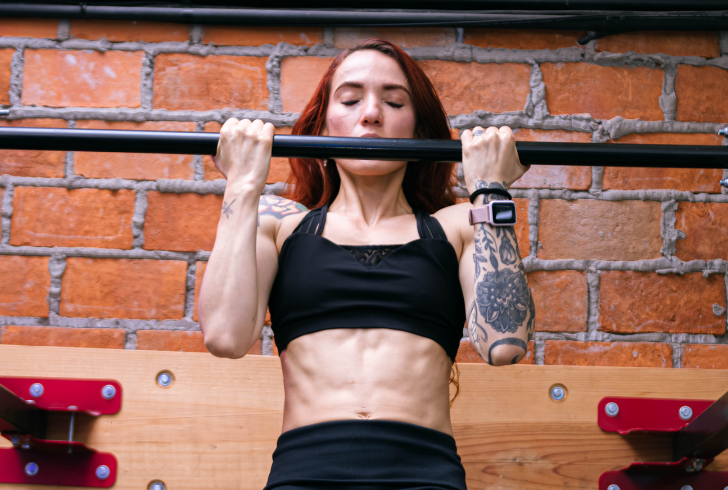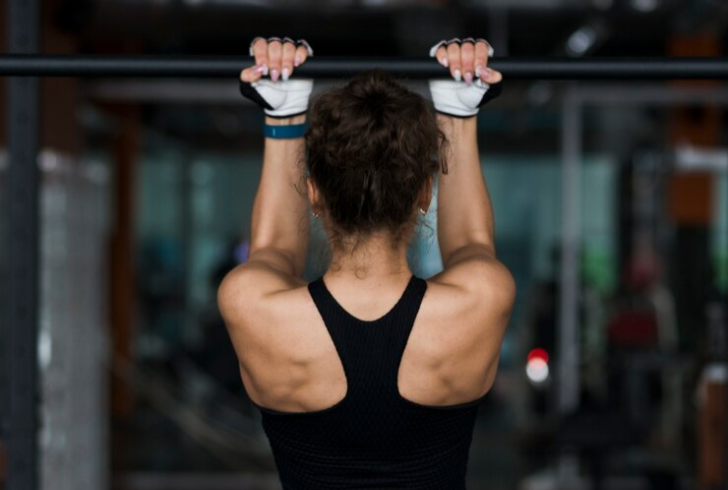When it comes to sculpting those coveted biceps, many of us gravitate towards classic exercises like curls. While curls do have their place, there's an underrated hero in the fitness world that deserves some spotlight: chin-ups. Yes, do chin-ups work biceps? Absolutely, and they can do wonders for your arm strength and size.
Do Chin-Ups Work Biceps? The Science Behind It

Pexels | Ali Alcántara | Chin-ups boost your workout with biomechanics that target key muscles.
Wondering if chin-ups truly hit the mark for bicep development? Without a doubt! Chin-ups engage the biceps effectively, targeting both the short and long heads of the muscle.
As you pull yourself up, the supination of your hands activates the biceps, leading to growth and strength. This exercise isn't just a staple for bodybuilders; it's beneficial for anyone looking to enhance their arm definition and strength.
Mastering the Chin-Up Technique
To reap the full benefits of chin-ups for your biceps, it's crucial to nail the technique:
- Grasp the Bar: Stand under the bar, arms fully extended, and grip it with hands shoulder-width apart.
- Position Your Body: Maintain a proud chest, shoulders down, and cross your lower legs.
- Pull Yourself Up: Use your back muscles to pull yourself towards the bar, aiming to get your chin over it.
- Lower Down: Hold for a moment at the top and then slowly lower your body back to the starting position.
Pro Tip: If you struggle with chin-ups, start with resistance bands to assist you. Over time, reduce the assistance as your biceps grow stronger.
Common Mistakes to Sidestep
While chin-ups are straightforward, they're also demanding. Avoid these common pitfalls to maximize your gains:
- Skipping Warm-Ups: Always warm up to enhance performance and reduce injury risk.
- Neck Strain: Keep your neck neutral; avoid straining it forward.
- Kipping: Steer clear of using momentum to swing yourself up; focus on controlled movements.
- Half-Reps: Aim for full range of motion—chin over the bar and arms fully extended.
Chin-Ups vs. Pull-Ups: The Difference Matters

Image by Freepik | Chin-ups vs. Pull-ups: Both target different muscle groups.
Though they may seem similar, chin-ups and pull-ups target different muscle groups. Chin-ups, with a supinated grip, heavily engage the biceps, making them a top pick for bicep development. Pull-ups, on the other hand, focus more on the back muscles. So, if you're aiming for bicep gains, chin-ups should be your go-to.
Variations to Spice Up Your Routine
Variety is key to continuous progress. Here are three chin-up variations to keep your biceps guessing:
- Sternum Chin-Up: Instead of aiming for your chin over the bar, aim for your sternum, emphasizing your scapular.
- One-and-a-Quarter Chin-Up: Add a quarter of a chin-up at either the top or bottom to target weak points.
- Grip n’ Rip Chin-Up: Focus on speed, gripping the bar tightly and pulling up as fast as possible.
Benefits of Incorporating Chin-Ups
Why choose chin-ups over machine-based exercises? Here are some compelling reasons:
- Home-Friendly: All you need is a doorway bar, making it a convenient choice for home workouts.
- Time-Efficient: Get a full-body workout in less time with this compound movement.
- Highly Flexible: Whether you're a beginner or advanced, chin-ups can be tailored to your fitness level.
How to Integrate Chin-Ups into Your Routine

Freepik | Opt for a grip that's not excessively wide to ensure maximum bicep engagement.
To maximize your bicep gains, consider adding chin-ups to your upper-body workout routine. Here's a sample plan:
- Warm-Up: Raise your heart rate with warm-ups and joint mobility exercises.
- Sets and Reps: Aim for 4-6 sets of 6-12 reps, adjusting rest times based on your goals.
- Cool Down: Finish with stretching to aid muscle recovery.
Wrapping It Up
So, do chin-ups work biceps? Absolutely, and they're a fantastic addition to any bicep-focused routine. Whether you're a fitness newbie or a seasoned gym-goer, chin-ups offer a versatile and effective way to build strong, defined biceps. With proper technique and consistency, you'll be flaunting those gains in no time!




